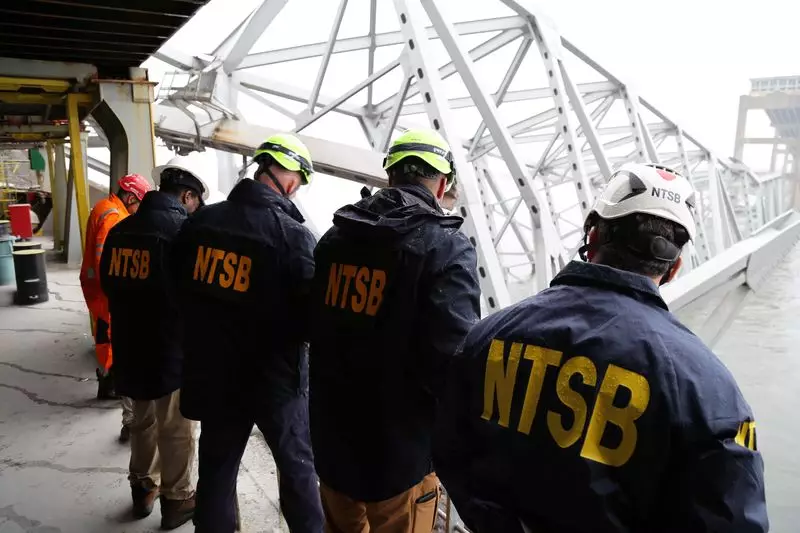The aftermath of the tragic Baltimore bridge collapse saw divers recovering the remains of two out of the six missing workers more than a day after the incident occurred. The bodies of Alejandro Hernandez Fuentes and Dorlian Ronial Castillo Cabrera were found in a submerged red pickup truck in the icy waters of the Patapsco River. These workers, hailing from Mexico, Guatemala, Honduras, and El Salvador, tragically lost their lives due to this devastating accident. The rescue operation was hindered by treacherous conditions, and the fate of the remaining workers is uncertain. The toll of this disaster is yet to be fully realized, with potential implications for the victims’ families and the community at large.
The fatal collision occurred in the early hours of the morning, as the container ship named the Dali collided with a pylon of the Francis Scott Key Bridge. The ship, en route to Sri Lanka, experienced a total power failure, resulting in the catastrophic event. The impact led to the collapse of a significant portion of the bridge, plunging workers into the freezing waters below. The swift response of emergency services in halting traffic on the bridge potentially averted a more extensive disaster, showcasing the importance of efficient crisis management in such situations.
The Key Bridge, dating back to 1977, is classified as “fracture critical” by federal standards, indicating its susceptibility to collapse if a segment of the structure fails. The lack of modern engineering redundancies made the bridge vulnerable to such catastrophic outcomes, as witnessed in this tragic event. The absence of structural reinforcements common in newer bridges contributed to the scale of the disaster, highlighting the need for stringent safety standards in infrastructure development.
The aftermath of the bridge collapse raises concerns about the financial implications of rebuilding such a critical structure. President Joe Biden’s commitment to federal support for reconstruction underscores the need for substantial funding to address the extensive damage. The estimated costs of reconstruction, reaching up to $600 million, present a significant financial burden that will require congressional approval for allocation. The long-term impact on local businesses, such as the port, further underscores the urgency of initiating comprehensive recovery efforts to mitigate economic setbacks.
The suspension of port operations following the collapse has implications for the flow of goods and services, particularly for the automotive, coal, and sugar industries. The potential disruptions in container shipments and exports could have far-reaching consequences for regional trade networks. The intricate supply chain dynamics of the port, handling millions of vehicles and coal exports annually, necessitate swift resolution to restore normalcy and prevent prolonged economic repercussions.
The tragic Baltimore bridge collapse serves as a grim reminder of the critical importance of infrastructure safety and preparedness. The loss of lives, the economic impact, and the disruptions to vital supply chains underscore the need for stringent regulations and proactive measures to prevent such disasters in the future. As recovery efforts continue and investigations delve into the root causes of this catastrophic event, the focus remains on safeguarding public infrastructure and ensuring the safety of workers and the community at large.

